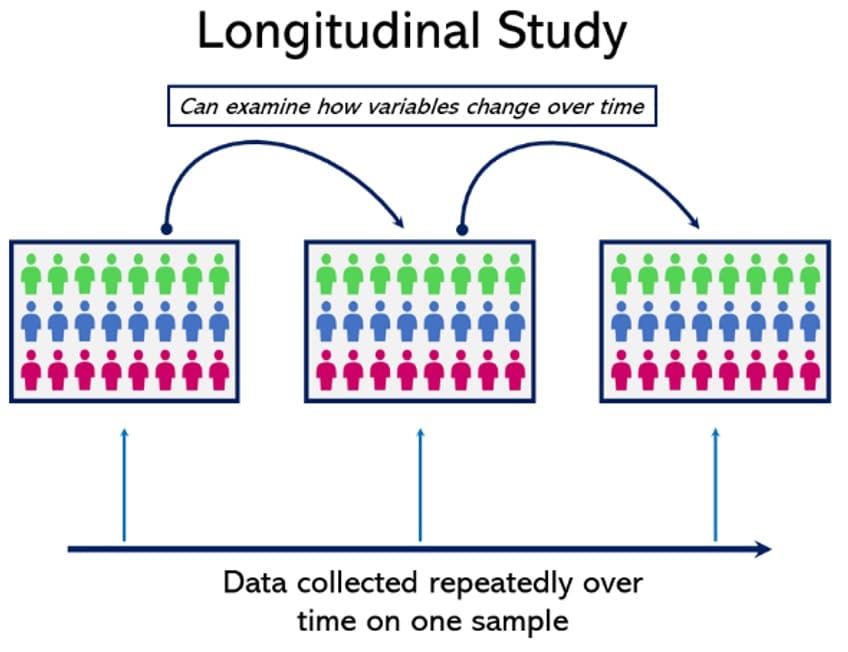
In the meantime, competing products might enter the market and consequently affect customer loyalty and product image. In a retrospective study, you are collecting data on events that have already occurred. You can examine historical information, such as medical records, in order to understand the past.
What’s the difference between a longitudinal and case-control study?
A panel study may research the causes of age-related changes and their effects. Researchers may measure the health markers of a group over time, such as their blood pressure, blood cholesterol, and mental acuity. Then, they can compare the scores to understand how age positively or negatively correlates with these measures. One of the longest-running longitudinal studies is the Harvard Study of Adult Development, which has been collecting data on the mental and physical health of a group of Boston men since 1938.

Gain insights with 80+ features for free
A researcher wants to know if there’s any relationship between children who drink milk before school and high classroom performance. Retrospective studies are best for research contexts where you want to quickly estimate an exposure’s effect on an outcome. It also helps you to discover preliminary measures of association in your data. If you study a smaller group to reduce research costs, results will be less generalizable to larger populations versus a study with a larger group.
What is a longitudinal study in research?
A symposium on Understanding Society, the UK Household Longitudinal Survey: introduction - ifs.org.uk
A symposium on Understanding Society, the UK Household Longitudinal Survey: introduction.
Posted: Wed, 17 Jan 2024 08:00:00 GMT [source]
Both groups would then be observed over time to see if there are differences in outcomes, which could suggest an effect of the treatment or intervention. Thus, testing and controlling for retest effects are important considerations in longitudinal research. If unchecked in analysis, retest gains can be confused with genuine intraindividual change or interindividual differences. To estimate retest effects, performance of retested groups is compared to groups taking the test for the first time. Any divergence suggests inflated scores due to retesting rather than true change. For example, familiarity with test items and procedures may allow participants to improve their scores over repeated testing above and beyond any true change.
Longitudinal study maps the transition to Alzheimer's disease - Mayo Clinic
Longitudinal study maps the transition to Alzheimer's disease.
Posted: Sat, 23 Jan 2021 08:00:00 GMT [source]
Ensure that your research questions are specific, measurable, and relevant to your field. The significance of longitudinal studies lies in their ability to uncover the intricacies of change and development, ultimately contributing to the advancement of knowledge and the improvement of various aspects of society. Conducting a longitudinal study with surveys is straightforward and applicable to almost any discipline. In the 18th century, Count Philibert Gueneau de Montbeillard conducted the first recorded longitudinal study when he measured his son every six months and published the information in "Histoire Naturelle." For example, imagine that researchers are interested in the mental health benefits of exercise in middle age and how exercise affects cognitive health as people age. The researchers hypothesize that people who are more physically fit in their 40s and 50s will be less likely to experience cognitive declines in their 70s and 80s.
Longitudinal studies are found in many research fields where time is an important factor. Cohort effects can also interfere with estimating other effects like retest effects. This happens because comparing groups to estimate retest effects relies on cohort equivalence. In large rooms, an L-shaped sofa will become the centerpiece of the room, and when you arrange it in front of the fireplace or add additional seating around the couch, it will be a great space for socializing. These sofas are highly versatile and come in a variety of sizes, colors, and fabrics, making them an affordable and flexible seating arrangement.
Patients with cancer may be vulnerable, with a high symptom burden and poor prognosis, but patients still value being able to contribute their views [10,26]. Longitudinal research with this patient group is important but some ethical issues are amplified by collecting in-depth data from the same participants over time. Particular issues have been identified as intrusion (into people’s lives), distortion (of experience due to repeated contact, personal involvement and closure of relationships) and dependency [4]. Repeated cross-sectional studies are a type of longitudinal study where participants change across sampling periods. For example, as part of a brand awareness survey, you ask different people from the same customer population about their brand preferences.
What are the disadvantages of a longitudinal study?
First, you gather your sample population, establish a baseline for the research, and observe and record the required data. Irrespective of what study type you’d be conducting, you need a versatile data collection tool to help you accurately record your data. Collecting your own data is a more verifiable method because you can trust your own data. The way you collect your data is also heavily dependent on the type of study you’re conducting. Medical researchers adopt retrospective study methods when they need to research rare conditions.
This increases the speed and cost-efficiency of longitudinal data collection and enables the examination of age/cohort effects. Appropriate multilevel statistical models are required to analyze the resulting complex data structure. There are certain risks to consider with this process that may create unpredictable outcomes, but it is also through this research method that we will likely find new ways to transform numerous scientific and medical fields in the future.
A cohort longitudinal study involves gathering information from a group of people with something in common, such as a specific trait or experience of the same event. Unlike panel studies, you can pick a different group to test in cohort studies. One of the panel study’s essential features is that researchers collect data from the same sample at different points in time. Most panel studies are designed for quantitative analysis, though they may also be used to collect qualitative data and unit of analysis. The difference between a cohort study and a panel study is that panel studies collect data from within a general population, rather than a specific set of particular individuals with a common characteristic. The goal of a panel study is to examine a representative sample of a larger population rather than a specific subset of people.
There are, of course, many other factors at play here and many other ways in which these two approaches differ – but we won’t go down that rabbit hole in this post. All rights are reserved, including those for text and data mining, AI training, and similar technologies. Knowing what information a study should gather is the first step in determining how to conduct the rest of the study.
This included interviews with patients from eight cancer diagnostic groups (and their caregivers) from diagnosis to three, six and 12 months later. As researchers working for the first time with longitudinal qualitative data we developed our research design and analysis strategy iteratively throughout the project. We have a particular focus on cancer patients, so this paper will have particular relevance for researchers interested in chronic and life limiting conditions.
LQR may be imbedded within case studies, ethnographies and within quantitative longitudinal studies such as cohort studies and randomized controlled trials. Mixed methods studies are the context of most LQR studies in healthcare [5]. Longitudinal studies are primarily a qualitative research method because the researcher observes and records changes in variables over an extended period. However, it can also be used to gather quantitative data depending on your research context. This means finding a sample population, following them, and documenting your findings over the course of your study.
We'll explore the strategies and techniques required to ensure the quality and integrity of your data throughout the study's duration. The design of the study is highly dependent on the nature of the research questions. Whenever a researcher decides to collect data by surveying their participants, what matters most are the questions that are asked in the survey. Unlike longitudinal studies, where the research variables can change during a study, a cross-sectional study observes a single instance with all variables remaining the same throughout the study.
Issues of time need to be explicitly placed within the interview, an aspect we could have strengthened in our study. Looking both forwards and backwards in time moves away from linear notions of time as discussed above, asking participants to reflect on the content of their previous interviews. One way of doing this may be to encourage participants to approach the interview with reflexivity [33], a concept we are familiar with as researchers but in longitudinal research may be as important for the participant. For example, an issue that seems important for participants in the short term may not prove to be as important in the long term with the benefit of hindsight or increased understanding of the context [34]. This tentative or provisional, often contradictory, understanding makes analysis complex.
The purpose of a longitudinal study is to assess not just what the data reveal at a fixed point in time, but to understand how (and why) things change over time. A group of researchers is studying whether there is a link between violence and video game usage. To reduce the amount of interference with their natural habits, these individuals come from a population that already plays video games. A longitudinal study is a research conducted over an extended period of time. It is mostly used in medical research and other areas like psychology or sociology.

No comments:
Post a Comment